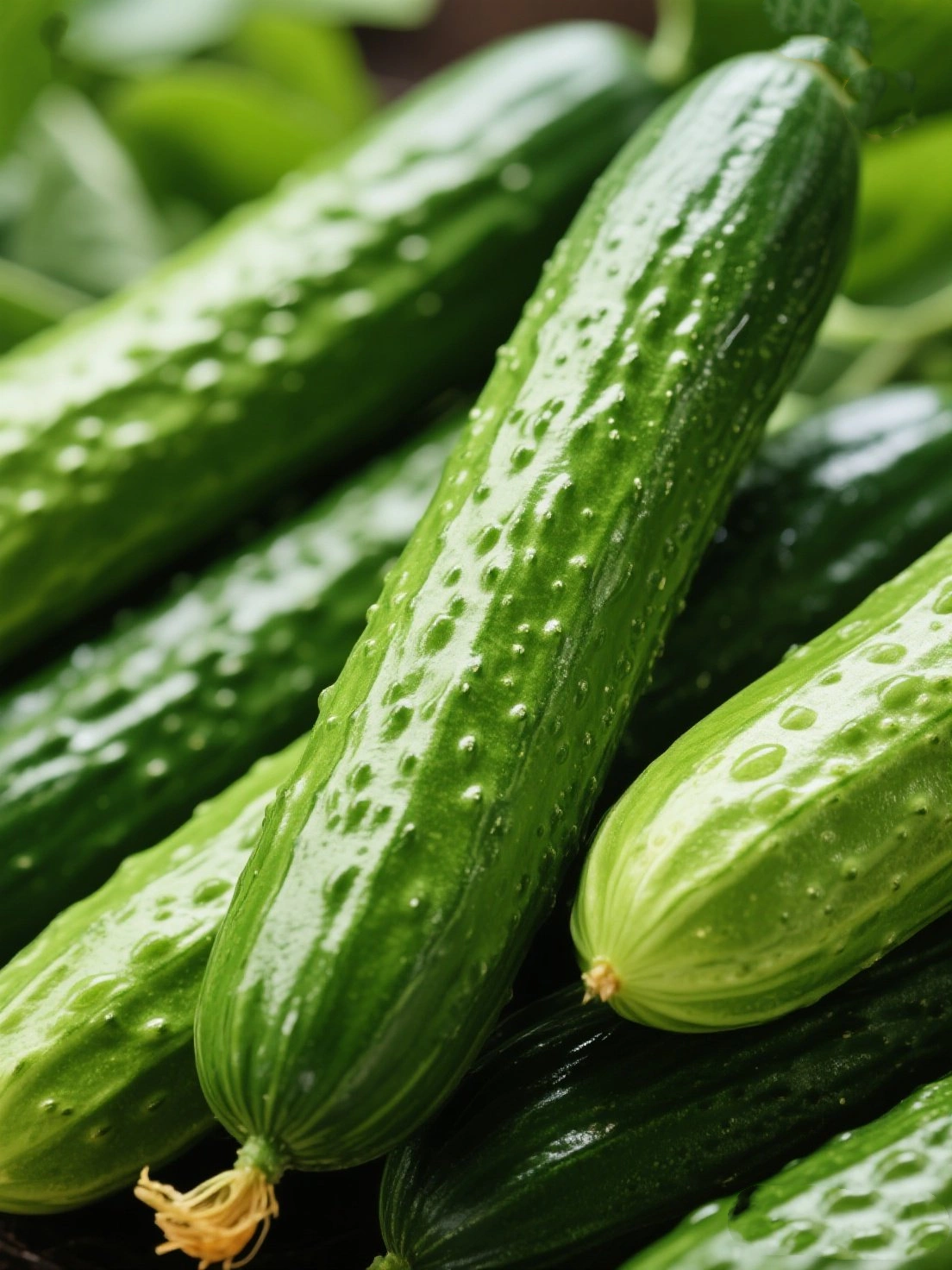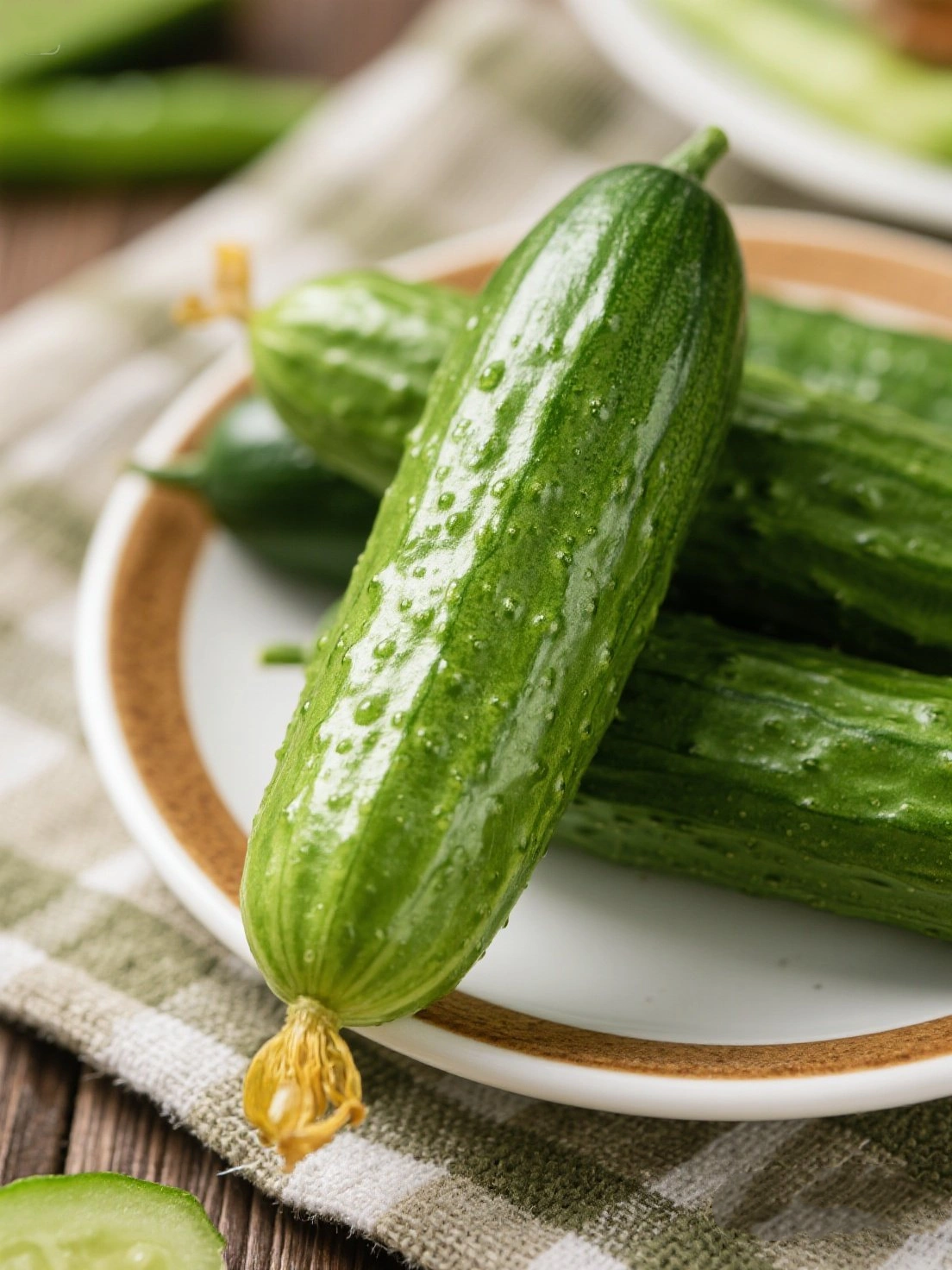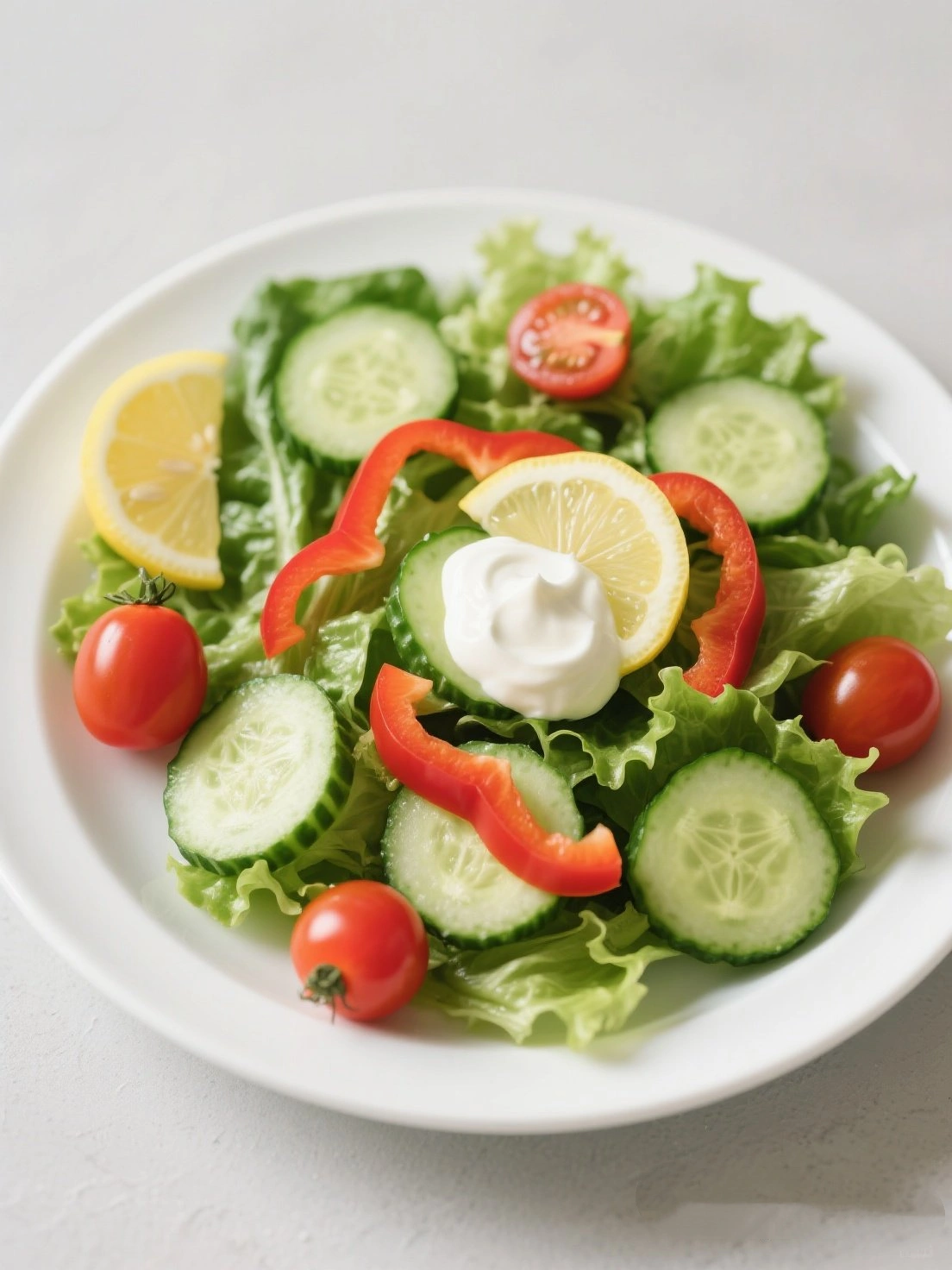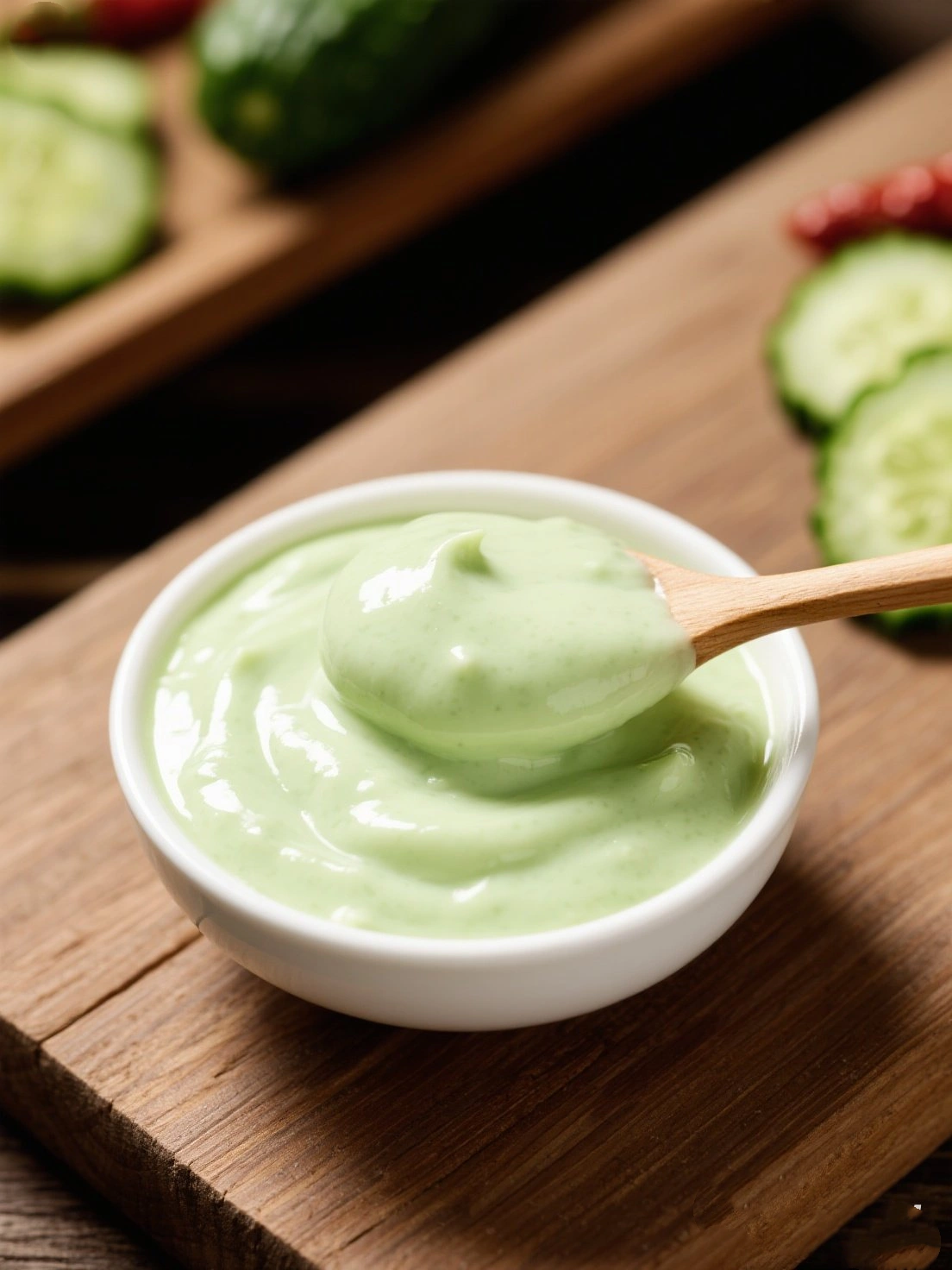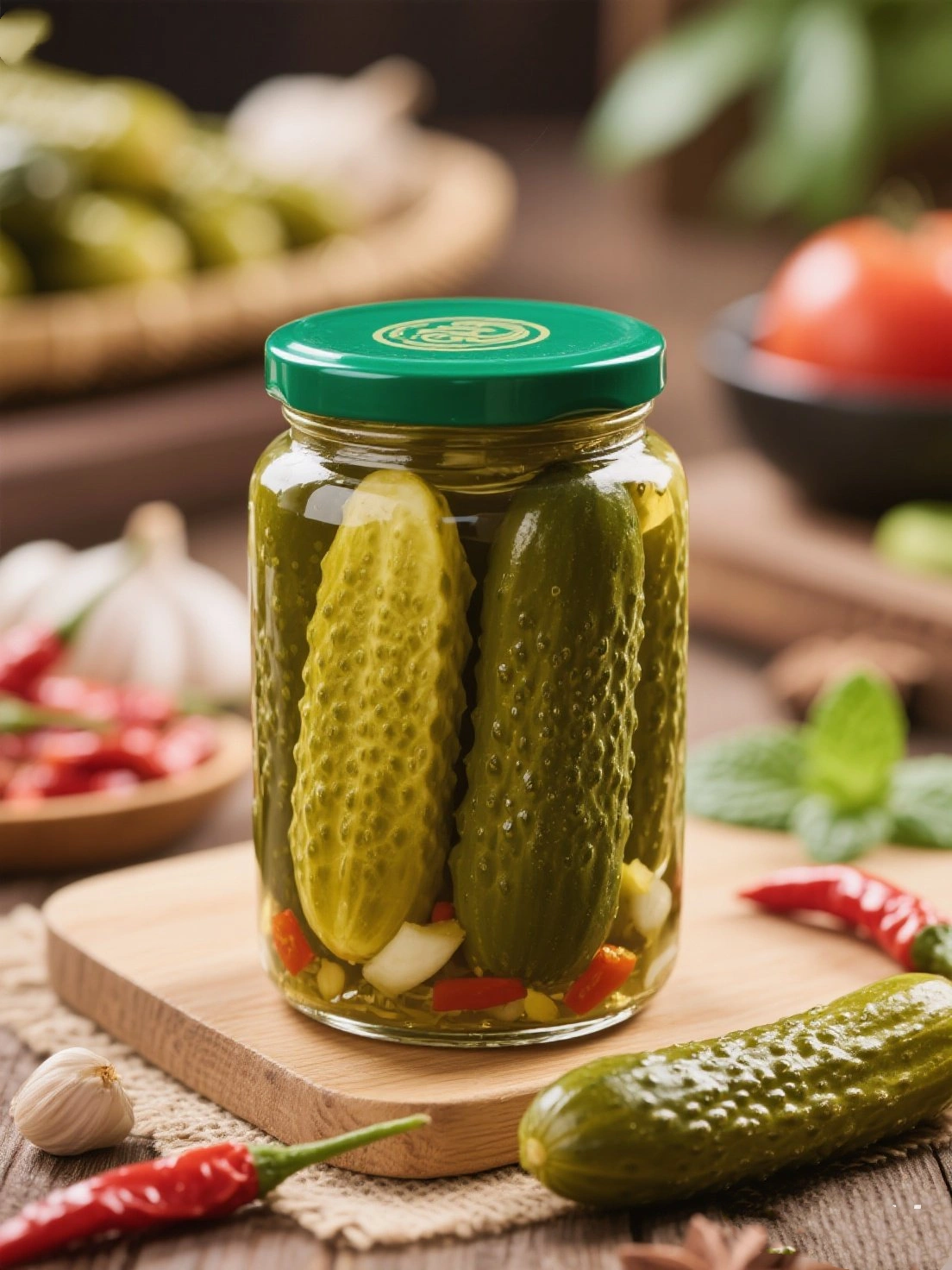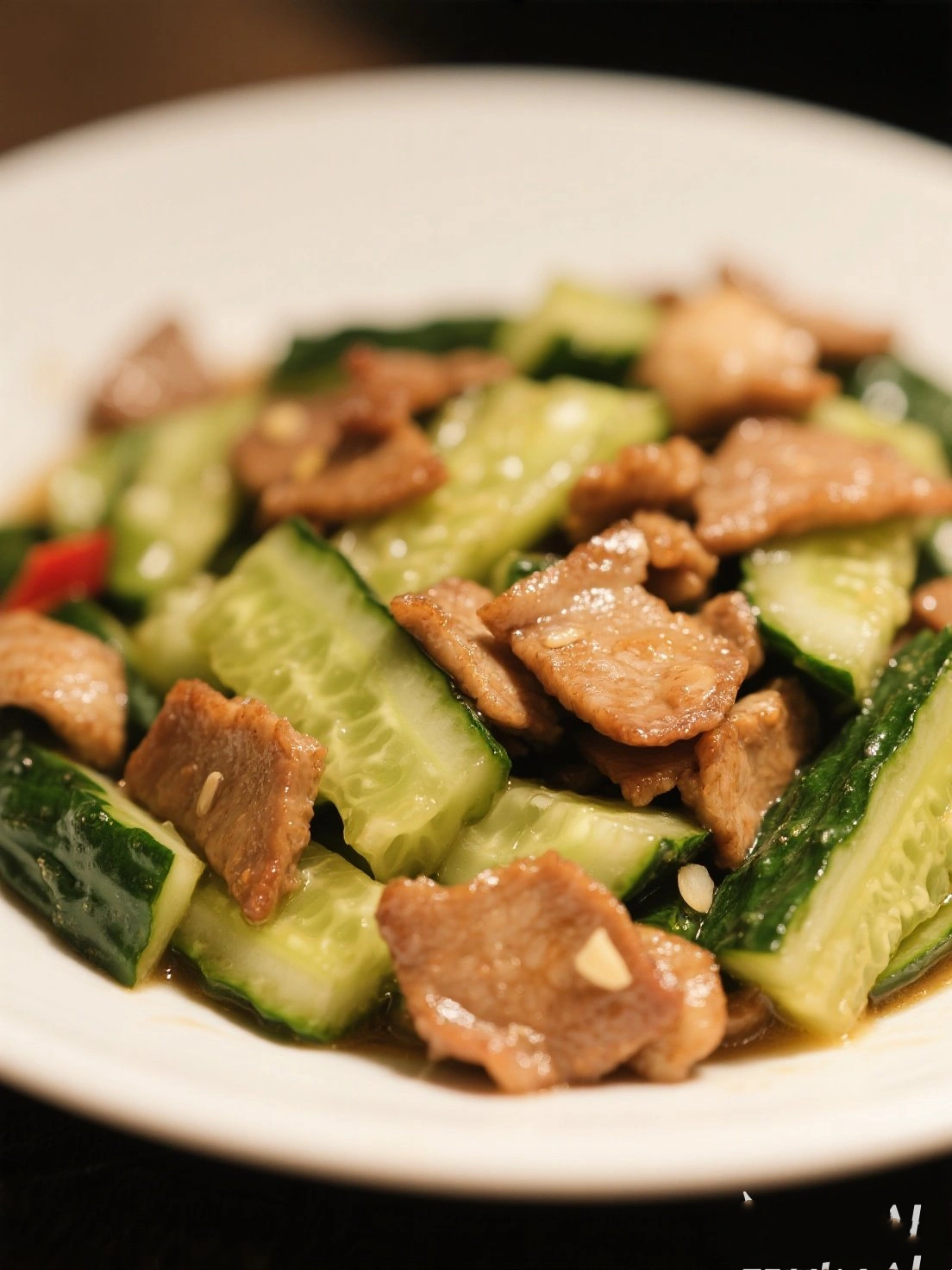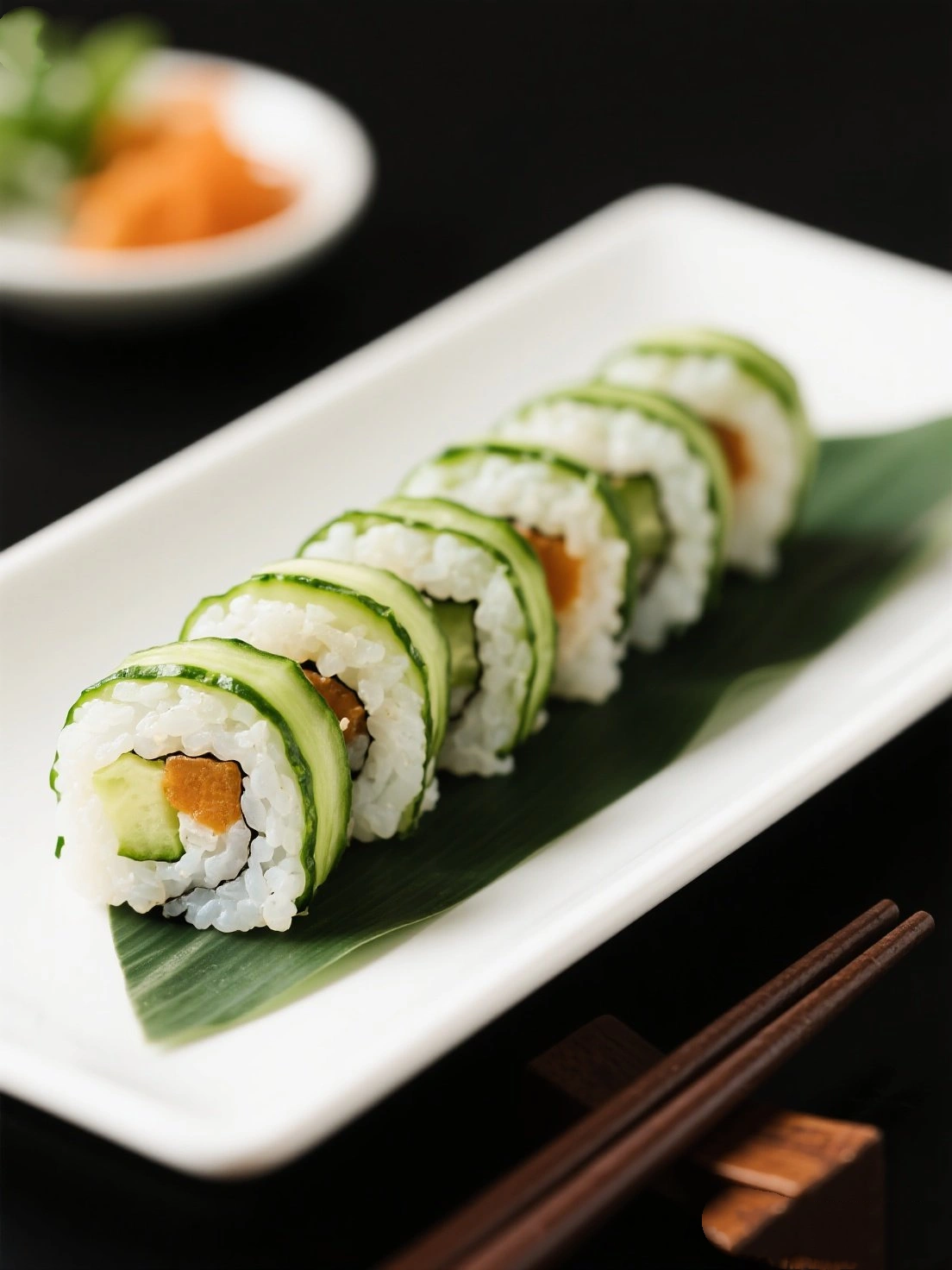Cucumbers (Cucumis sativus) are creeping vine plants that produce cylindrical fruits, widely cultivated around the world. Belonging to the gourd family (Cucurbitaceae), cucumbers have been cultivated for at least 3,000 years, with origins in South Asia but now grown globally.
There are three main types of cucumbers: slicing cucumbers (for fresh eating), pickling cucumbers (smaller with bumpy skin), and burpless cucumbers (seedless varieties with thinner skin). Modern cultivation has developed many varieties suited to different climates and uses.
With their high water content (about 96%) and refreshing taste, cucumbers are a staple in salads, sandwiches, and beverages worldwide. They're particularly valued in hot climates for their cooling properties and hydration benefits.
